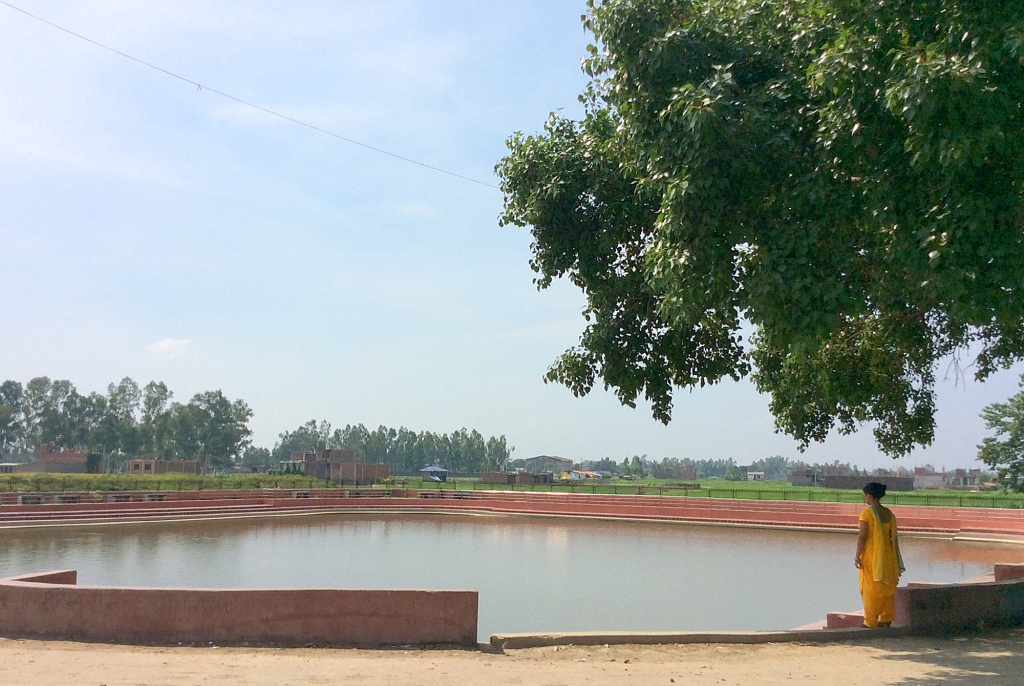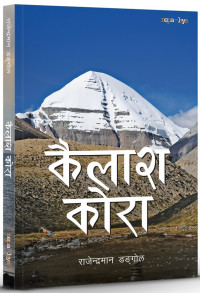Travel
Mani Mandap: a hidden gem in Janakpur
Contrary to what most people believe, Vivah Mandap isn’t the actual site of Ram-Janaki’s wedding.
Sweksha Karna
In mid-August, Janakpur stays true to its earthy aesthetic. The hot and humid 35-odd degree weather at this time of year foils any tourism, leaving it for its native inhabitants and a few outsiders visiting friends and family. Outside Janakpur Airport, a queue of electric rickshaws stand next to their drivers, who sit under the shade of a huge tree. Between sharing stories of how they came to the city from their villages, the divvy recent arrival’s passengers among themselves, load luggage and drive off. Even older men, who look in their late 50s or early 60s, seem to be surprisingly strong and extremely adamant when it comes to negotiating their fairs.
As the rickshaws slowly approach downtown, saffron buildings come into sight. The roads are gravelled, dusty and mostly deserted. There are a few men in shirts and dhoti, taking shade from the heat in paan shops, and a couple of blouseless sari-clad old women saunter barefoot to a nearby pond for a dip.
The city’s earth-toned palette is what makes it seem even more organic, raw and refreshing than it is—especially when compared to the capital. After the 20-minute bumpy rickshaw ride, the spectacular Janaki Mandir consumes the landscape, blurring everything else around it. Its classical and neo-classical design, fortification and coloured glass engravings make it one of a kind.
It’s almost as if the white marble and hymns subtly echoing from the corners of the sanctuary provide the people inside with a sense of tranquillity. To the west of the temple, two rows of Ashoka trees lead to Vivah Mandap. On mornings and evenings, the museum is filled with tourists, their guides, old couples and local teenagers, listening to the stories of Ram and Sita’s swayamvar and wedding, along with their siblings. Inside the building, multiple idols are placed, duplicating the ‘marba’ and the holy matrimony. But on a hot summer’s noon, only an old woman can be seen sitting on the stairs, feeding the pigeons while piously humming bhajans.
The guides are unoccupied compared to other days, given the exceptional heat, so they don’t mind much. Even if they were busy, they would probably recite the history of the entire city in a single breath, and then go on to complain about how Janakpur is more than just Janaki Mandir and Vivah Mandap—which apparently isn’t even the actual venue of the wedding.
.jpg)
“Maybe they built Vivah Mandap here so that they don’t have to travel too far, making things easy for them,” says one. If you ask, they will give you directions and instructions on how to reach the actual mandap, which lies a little farther from the main city.
About a 30-minute rickshaw ride away from the Vivah Mandap, in the village of Rani Bazaar, stands a small temple of Pracheen Shri Sitaram Vivah Mani Mandap. Mani Mandap, as the locals call it, is only 4.5 kilometres away from the more popular Vivah Mandap. However, humid weather combined with almost-drained rickshaws makes the journey seem longer than it is. But once you reach it all seems worth it.
The temple, like the rest of the city, is painted in saffron and adheres to the city’s palette and it’s religious values. Right opposite to the entrance of the temple and on the bank of one of the three ponds surrounding Mani Mandap, a huge peepal tree stands. Under the tree, children in their uniforms wait for their buses, locals passing by sit down to cool and sleep, and the elderly listen to what the temple’s pandit, or priest, has to say.
As soon as the pandit sees a vehicle stopping at the entrance, he rushes back to the temple,“ I didn’t think anyone was going to visit today!” He asks everyone to take off their shoes, except for children younger than eight. “It’s too hot, it’ll burn their feet”, he says.
The temple has two shrines, both having idols of Ram and Sita. The pandit excitedly takes all the visitors to the shrine, blesses them and offers them tulsi-water, all twice. He then takes them to the courtyard, passing by the cattle that the sanctuary rears, and shows them the platform where Ram-Janaki are believed to have tied the knot.
One of the visitors points out how the place doesn’t look as extravagant as he expected. About one foot above the ground, this marba has a canopy of another sacred fig where people sit down to discuss their day. Right next to it, in a small pond, a woman is washing clothes while her children play in the dome on the opposite bank.
“This is where Lord Ram washed his feet before sitting in the mandap and this is the pond where he washed sindoor off his hands after the wedding,” says local Ram Kirpal, pointing to two adjacent ponds. The locals believe the water to have become red from the sindoor, however, when you peek into the pond, all you can see is green, tainted water. Despite that, among all three ponds, this one seems to be the only one tiled, and comparatively cleaner than others.

“In a day, only about five to six people visit, not a lot of people know about the history this place holds,” says the pandit. According to folklore, the mandap was decorated entirely with mani jewels, which is where it gets its name from. This place, even though it is isolated, and given minimum attention, holds the same beauty as its name.
Being surrounded by lakes and forests where accidents and crimes aren’t uncommon—locals say at least one murder happens around here every year, which is why city people and tourists avoid visiting the mandap. The locals of Rani Baazar, however, are keen on welcoming more and more people to the site. “The mandap is a huge part of our heritage, and we want to share it with as many people as possible,” says Puran Jha, an old man by name and nature.
Even though the mandap lacks proper management, it’s authenticity is what makes it special. The simplicity of the site reminds visitors of its humble roots and gives them a break from Janakpur’s chaotic nature. Since there has barely been any interference with the mandap, it holds huge religious value. It’s not the most accommodating or frequented site in the city of Janakpur, but true to its name, it sure is a gem.




 5.47°C Kathmandu
5.47°C Kathmandu










